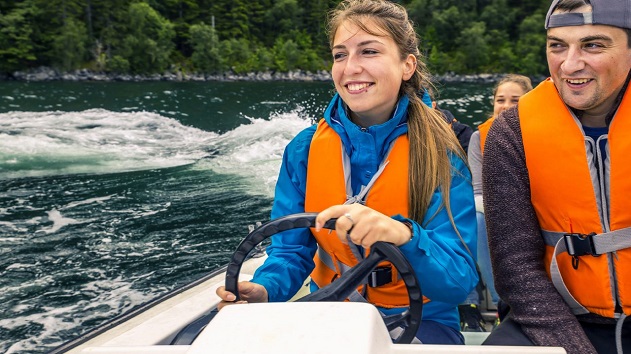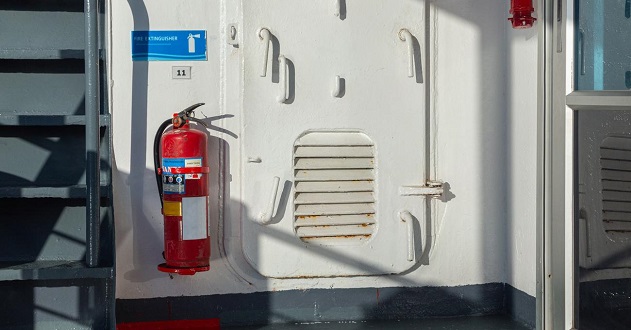Boat Safety Equipment: Have a Care-Free Sail Anywhere You Go
Recreational boating is a very fun and relaxing activity you can do with your friends and family. It enhances your life quality and reduces stress. It also gives you an opportunity to learn new things and explore new places. Boating lets you create new, long-lasting memories with your dearest people and gives you new and fun stories to tell with each trip. Don’t go on a new adventure if you’re not sure you have all of the proper safety equipment. Things like life jackets, signal devices and fire extinguishers can be a true lifesaver.
Life Jackets & Floating Devices

A life jacket is made to keep a person afloat in the event of an accident, while skiing, or when wakeboarding. These are known as PFDs, or personal flotation devices, and include ski vests and life vests. Although their function may appear very simple, PFDs are a must on any boat. They fall into the essential boat safety equipment category and there should be a jacket for each person that sails the boat.
If there are kids younger than 12, they should wear them at all times. Adults, on the other hand, should have them close at hand. This is because, in case something bad happens, everyone should be safe and equipped. Even if someone is unconscious, the life jacket will keep them above the water until help arrives. There are 5 different kinds of life vests. Type I is bulky has great buoyancy and will turn you face-up. type II has a very simple construction and it’s budget-friendly.
Type III are ski vests which have a zipper and a buckle. If you’re a conscious wearer these are the vests for you. Type IV vests are the ones that you need to hold and they have 7.5kg of buoyancy. Last but not least, type V vests which are a combination of sailboat harnesses, rafting vests and flotation coats.
It’s important to get the vest or jacket with the right fit. One that’s too big can slip a let you drown, and if it’s too small it won’t keep you afloat. Make sure you always try the jacket before buying it. Secure any buckles or zippers and raise your hands high. Ask your friend or the seller to pull up the jacket. If it comes up to your ears get a smaller size because it may slip out completely in the water.
Once you find a jacket that goes up to your chin, you’re good to go. That would be the proper fit for you. When buying a jacket for children, pay attention to the crotch buckle. Children’s vests should have one to make them more secure. Before every boat trip you make, take the time to check the vests for some kind of damage or wear and tear. If you notice something, replace the jacket with a new one before you put the protective boat cover and dock in the marine.
EPIRBs & PLBs
PLBs, or personal locator beacons, and EPIRBs, or emergency position indicating radio beacons, can save lives in many kinds of hazardous situations. They’re the devices that will help locate you if you have an accident far at sea.
You’ll be grateful for having EPIRBs and PLBs when all other forms of communication are unavailable due to sinking, electrical problems, being outside of the VHF range, or other circumstances. You should bring these devices with you no matter if you’re going on a short trip or a longer cruise.
EPIRB
Manufacturers created EPIRBs that can be managed in 2 ways, manually and automatically. The manual one needs a human to remove the device from the bracket and activate it. The automatic on the other hand reacts and activates as soon as it touches salt water.
The manual EPIRB is usually attached to the life raft grab bag or to the bulkhead. The automatic one is a bit complicated to have because you need to be careful where you install it. Make sure it’s away from the water, damage and thieves. Otherwise, it may get activated without any danger involved.
PLB
An excellent replacement for an EPIRB is a 406 MHz PLB device. It’s a great addition to your boat safety equipment. It’s personal property rather than being registered to the sailing vessel. It sends the signal to the desired location after you manually activate it. But keep in mind that it has a shorter battery life than the EPIRB and will stop sending signals faster. If you own a smaller boat or other small watercraft, this is the device that will suit you the most.
Fire Extinguishers

Besides being used on land, fire extinguishers are a must-have boat safety gear as well. This is especially true if the boat is motor-powered. These extinguishers even have a letter classification, so you know where and what to use which one.
- A is for paper, wood and cloth;
- B is for flammable liquids and gasses;
- C is for electrical equipment;
- D is for combustible metals.
You can calculate how many fire extinguishers you’ll need based on the size of the boat. Always keep them in a location that is simple and easy to get to so that people can quickly spot them and take action. Ensure that everyone on board is familiar with how to operate it: draw the pin, press the handle, and aim at the target. By doing this, you can be sure the damage and danger will be minimal.
Sound Signalling Devices
In case of a real emergency and danger, it’s important to stay as calm as you can and keep your composure. Put the anchor down and send a distress signal to the nearest location. Sound signalling devices are useful for both day and night situations. Any boat under 12 metres should have a sound signal that can be heard at least one kilometre away.
Your voice won’t help, but horns, whistles, or bells will. If the boat is larger than 12 metres, you need to have a device that can produce a sound that lasts at least 6 seconds and can be heard up to 1 kilometre away. Even kayaks and small boats should always have a whistle on hand for emergencies.
Visual Signalling Devices
Besides the sound signals, your boat should be equipped with visual signalling devices as well. These signals come in many different sizes and ranges. Which one you choose depends on the boat’s size and the area you’re travelling to. On vessels, 4.8m or smaller, flares or so-called nighttime signals are a must-have safety equipment. If the boat is larger than 4.8m you should own day and night visible signals. Aerial light flares and orange or white smoke are a few kinds of flares that fit your needs.



